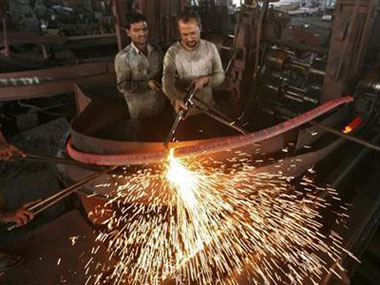Mumbai: The country’s economic growth in the fourth quarter ended March 2019 is expected to moderate to 6.1-5.9 percent, which could pull down growth rate for the entire fiscal 2018-19 to below 7 percent, according to a report by SBI. The slip in GDP growth may force the Reserve Bank of India (RBI) to move with a deeper 0.50 percent cut in rates at its next review to propel the sluggish economy, the SBI Ecowrap report said Monday. The growth could come at 6.1-5.9 percent for the January-March period, getting the full-year growth to 6.9 percent, an estimate by the economic researchers at the country’s largest lender SBI ahead of the announcement of official data on Thursday, said.
“We expect GDP growth for Q4FY19 at 6.1 percent. GVA (gross value added) growth could be at 6 percent or slip marginally below 6 percent at 5.9 percent. FY19 GDP growth will be at 6.9 percent,” it said. However, it added that the current slowdown can be “transitory” if proper policies are adopted in the interim.
Calling out the high real interest rates—the differential between the policy rate and headline inflation—as an impediment to investment, it said the RBI can cut rates by 0.35-0.50 percent at its next policy announcement. The RBI’s larger rate cut can be effective only if transmission of the rates happens quickly, it said, suggesting a few factors that the central bank needs to keep in mind while delivering a rate cut. [caption id=“attachment_4188031” align=“alignleft” width=“380”]  Representational image. Reuters[/caption] Pointing out to the cumulative rate cuts of 0.50 percent by the RBI since February, the note said the median marginal cost of funds-based lending rate by banks has moved down by only 0.07 percent. The first will be to ensure adoption of external benchmark rate which moves in with the RBI’s repo rate. “Ensure that asset and liability side of the banks move in tandem and ensure repo rate is directly benchmarked to external benchmark/non-volatile bank liabilities/CASA that is mostly used for transaction purposes,” it said. Otherwise, it would continue to be constrained by lack of transmission, even as the RBI will continue to cut rates, it said. The RBI, which will be undertaking its second monetary policy review on 6 June, also has to ensure that liquidity is “plentiful” in the system, amid muted government spending and currency leakage due to elections. It can also use the “potent” weapon of cutting the cash reserve ratio (CRR) or merge CRR in liquidity coverage ratio estimation, the note said, calling this as a “less likely” measure. One percentage point cut in the CRR can release Rs 1.28 lakh crore, reduce lending rates by 0.15 percent and improve banks’ profitability by Rs 12,000 crore annually. Analysts at private sector lender ICICI Bank pointed out that slowdown in growth is a key factor which the new government will have to grapple with and also hinted at help needed from the RBI to tackle the same. “We expect growth rates to stay weak but a combination of strong government policy support and benign monetary policy environment should lead to a recovery in growth prospects towards the second half of this fiscal year (FY20),” it said. It can be noted that inflation has been inching up lately and even the RBI, which is mandated to keep the price rise at four percent in the medium term, has also estimated the same to rise. Economists at domestic rating agency Care Ratings estimated headline inflation to rise to 4 percent in 2019-20 as against 3.4 percent in 2018-19. GDP growth will inch up to 7.2 percent in FY20 from the 7 percent it expects in FY19. The new government will have to balance policy imperatives to ensure that growth receives a boost in the short term and also continue with more long-term reform activity, ICICI Bank report said. “We believe, post-election, capital flows will pick up materially and thus RBI will be able to recoup dollars and add to foreign exchange reserves and thus attendant domestic liquidity. In fact, since the exit polls and subsequent results, there has been inflow into the market of around Rs 4,000 crore,” it said. Commenting on its fourth-quarter estimate of a slip in GDP growth to just above 6 percent, the SBI note said both the investment demand and consumption demand is showing signs of moderation as revealed by various leading indicators. Performance of the fast-moving consumer goods sector is also “lacklustre” with a deceleration in demand for staples such as biscuits and soaps, it said.


)

)
)
)
)
)
)
)
)



